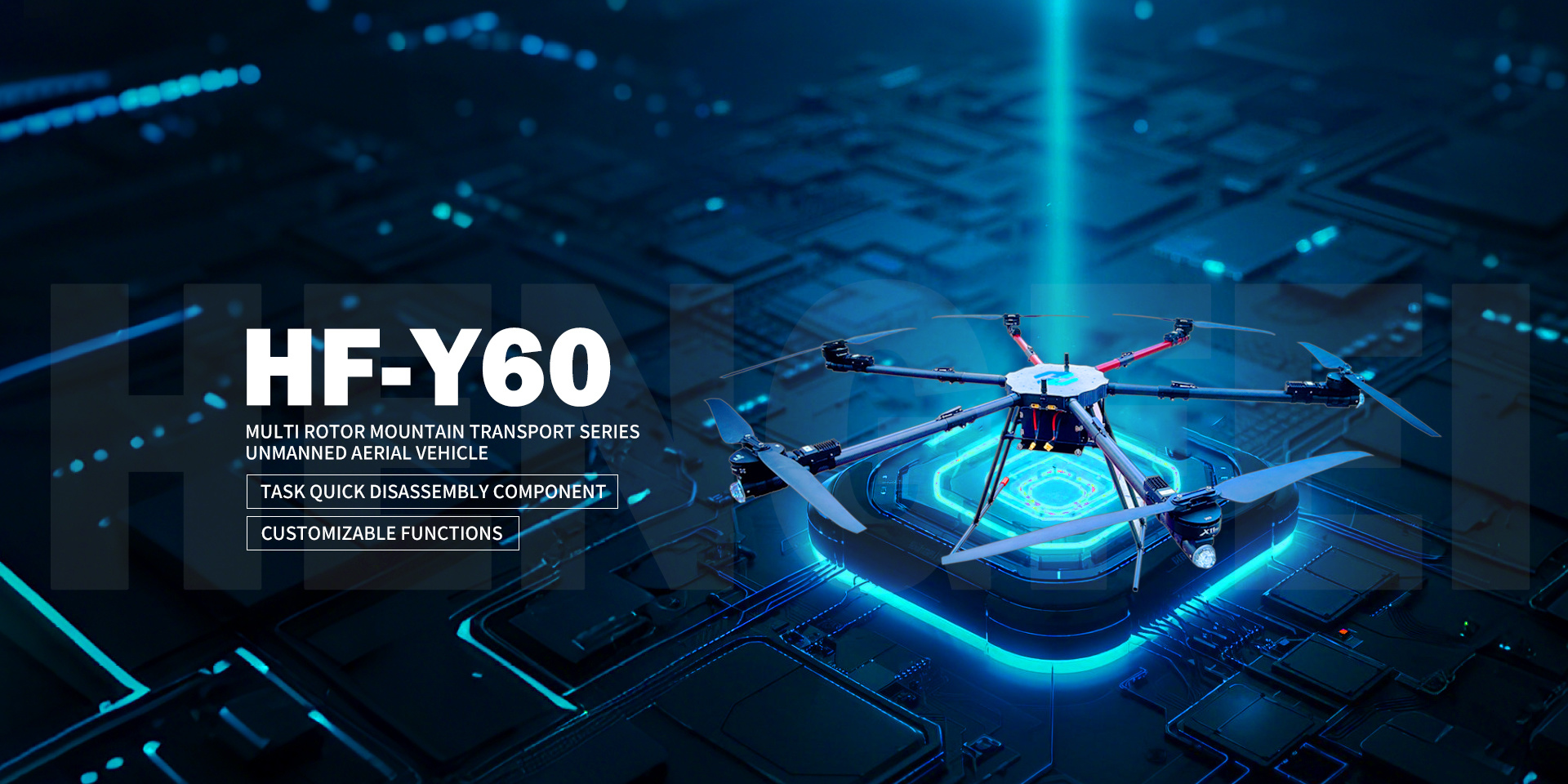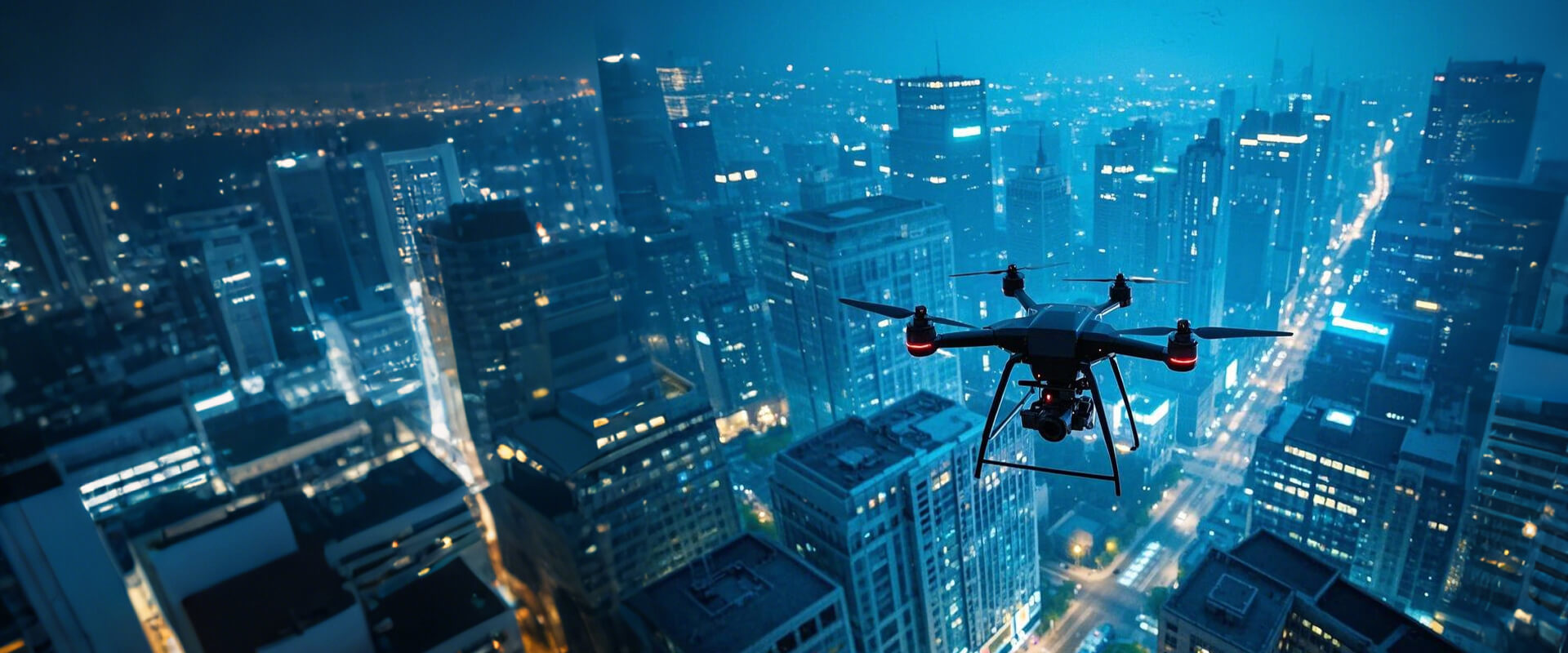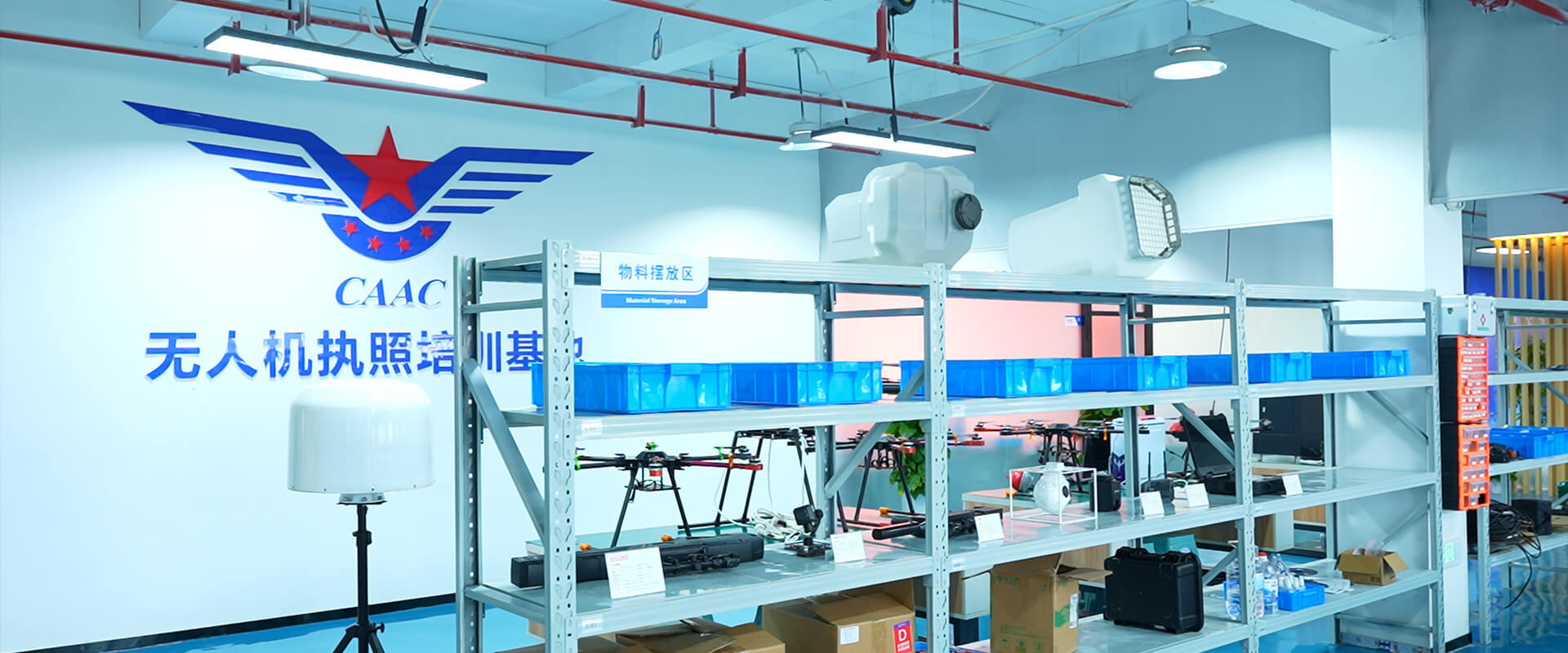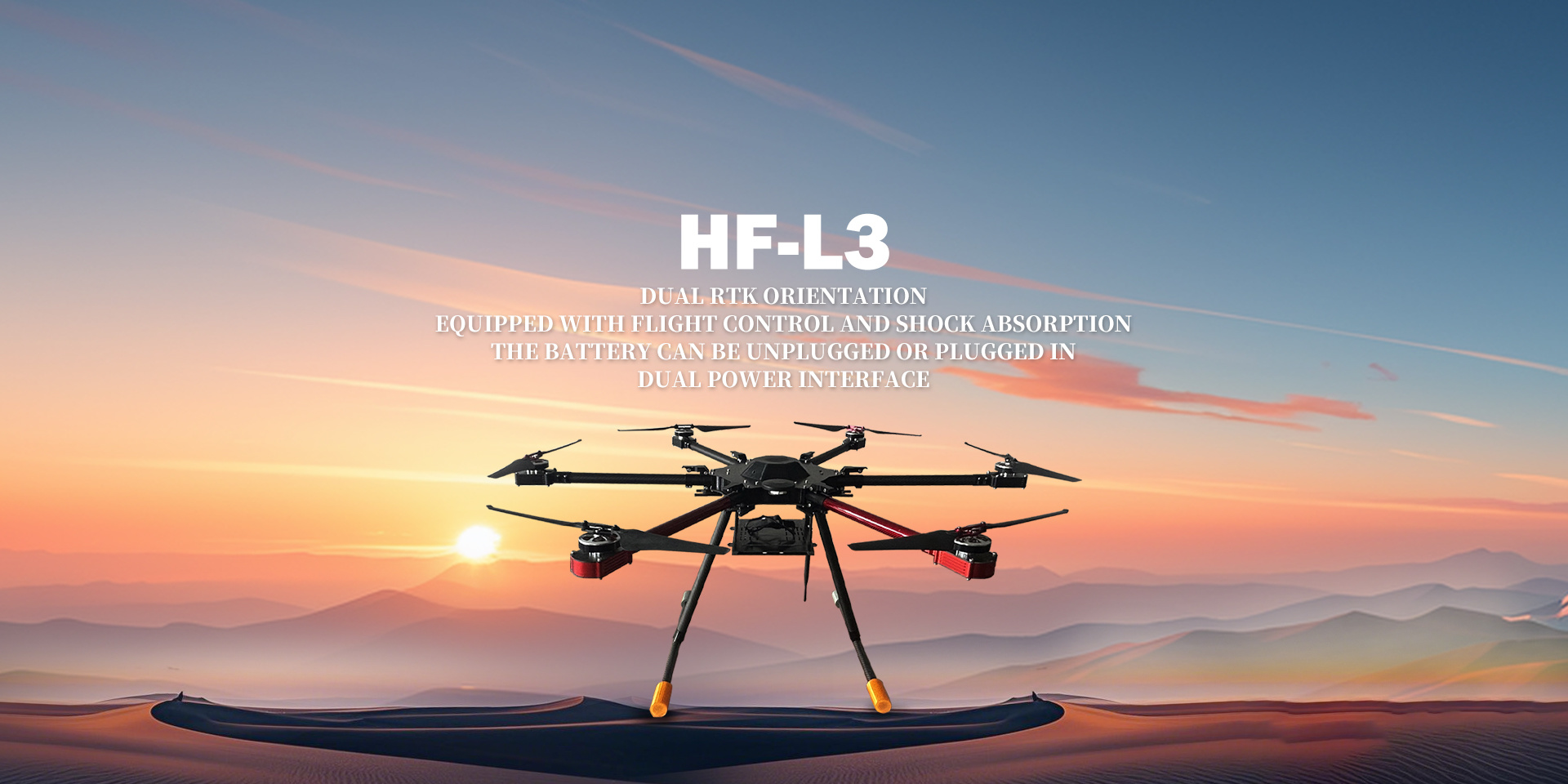-
HengfeiGuizhou Hengfei Technology Co., Ltd., relying on a comprehensive and advanced full-industry-chain ecosystem thinking and industrial development concept, builds an integrated system covering general assembly integration, R&D, production and manufacturing, general aviation services, full-industry-chain services, application scenario construction, and low-altitude economic integrated application operation services derived from the industrial chain; providing professional technology, equipment supply, professional personnel, solutions, supporting facilities, and financing for comprehensive services.

-
ProductIs a low-altitude economic comprehensive operation service provider integrating the manufacturing and sales of intelligent unmanned aerial vehicles, the research and development of intelligent robots, the development of low-altitude economic application scenarios, flight training, general aviation services, surveying and mapping, technical services, and technical consulting.

-
ApplicationIs a low-altitude economic comprehensive operation service provider integrating the manufacturing and sales of intelligent unmanned aerial vehicles, the research and development of intelligent robots, the development of low-altitude economic application scenarios, flight training, general aviation services, surveying and mapping, technical services, and technical consulting.

-
R&DGuizhou Hengfei Technology Co., Ltd., relying on a comprehensive and advanced full-industry-chain ecosystem thinking and industrial development concept, builds an integrated system covering general assembly integration, R&D, production and manufacturing, general aviation services, full-industry-chain services, application scenario construction, and low-altitude economic integrated application operation services derived from the industrial chain; providing professional technology, equipment supply, professional personnel, solutions, supporting facilities, and financing for comprehensive services.

-
TrainingStarting in 2020, we began using drones in the traditional industry, and the company sent four people to learn how to fly drones and obtain pilot licenses issued by the Civil Aviation Administration. In line with the national development direction, the company initiated a transformation, conducting research and investigations into 16 low-altitude economic industries nationwide.

-
IndustryIs a low-altitude economic comprehensive operation service provider integrating the manufacturing and sales of intelligent unmanned aerial vehicles, the research and development of intelligent robots, the development of low-altitude economic application scenarios, flight training, general aviation services, surveying and mapping, technical services, and technical consulting.

-
ContactGuizhou Hengfei Technology Co., Ltd., relying on a comprehensive and advanced full-industry-chain ecosystem thinking and industrial development concept, builds an integrated system covering general assembly integration, R&D, production and manufacturing, general aviation services, full-industry-chain services, application scenario construction, and low-altitude economic integrated application operation services derived from the industrial chain; providing professional technology, equipment supply, professional personnel, solutions, supporting facilities, and financing for comprehensive services.

-
Language
Low-altitude economy integrated operation service center
Low-altitude economy integrated operation service center
Beginner's Guide to Drone Flying: Easily Master Flying Skills
所属分类:
Release time:2025-02-17
来源:
作者:
Drone Flight Beginner's Guide: Easily Master Flight Skills Want to become a drone flight expert? Mastering basic operating skills is key! Today, we'll share some basic drone flight operating skills to help you fly more confidently and safely in the sky. 🚀 Remote Control Familiarity: First, take the time to familiarize yourself with your drone's remote control. Most remote controls have two joysticks: the left controls altitude and rotation, and the right controls forward, backward, left, and right movement. Understanding the function of each button and switch allows you to react more quickly during flight. 🛫 Takeoff Techniques: Before takeoff, ensure the drone's battery is fully charged and the surrounding environment is open and free of obstacles. Gently push the throttle up, maintain stability, and avoid sudden pushes that could cause the drone to lose control. 🛬 Landing Techniques: When landing, gradually reduce the throttle to ensure the drone descends smoothly. Choose to land on grass or soft ground to reduce impact on the bottom of the drone. 📏 Flight Altitude: Maintaining an appropriate flight altitude is key to flight safety. Generally, the in-sight flight altitude should be controlled within 120 meters to avoid conflicts with other aircraft. Using the altitude hold function (if available) can help you maintain a stable altitude more easily. 🌐 Flight Modes: Drones typically have multiple flight modes, such as GPS mode and attitude mode. GPS mode is suitable for beginners because it automatically maintains stability; while attitude mode requires higher control skills and is suitable for experienced pilots. Choose the appropriate mode according to your skill level. 🔄 Basic Movement Practice: During flight, it is very important to master some basic movements. You can try the following exercises: Forward and backward flight: Practice the drone's forward and backward movement to feel the sensitivity of the control. Left and right turns: Control the drone's turns with the left and right joysticks, keeping the flight stable. 360-degree rotation: In a safe, open area, try to have the drone perform a 360-degree rotation to improve controllability.
Beginner's Guide to Drone Flying: Easily Master Flying Skills
Want to become a drone flying expert? Mastering basic operating skills is key! Today, we will share some basic drone flying operation skills to help you fly more confidently and safely in the sky.
🚀 Remote Control Familiarization: First, take the time to familiarize yourself with your drone's remote control. Most remote controls have two joysticks: the left controls altitude and rotation, and the right controls forward, backward, left, and right movement. Understanding the function of each button and switch allows you to react more quickly during flight.
🛫 Takeoff Tips: Before takeoff, ensure that the drone's battery is fully charged and that the surrounding environment is open and free of obstacles. Gently push the throttle up, maintain stability, and avoid sudden pushes that could cause the drone to lose control.
🛬 Landing Tips: When landing, gradually reduce the throttle to ensure that the drone descends smoothly. Choose to land on grass or soft ground to reduce the impact on the bottom of the drone.
📏 Flight Altitude: Maintaining an appropriate flight altitude is key to flight safety. Generally, the flight altitude within visual range should be controlled within 120 meters to avoid conflicts with other aircraft. Using the altitude hold function (if available) can help you maintain a stable altitude more easily.
🌐 Flight Modes: Drones usually have multiple flight modes, such as GPS mode and attitude mode. GPS mode is suitable for beginners because it can automatically maintain stability; while attitude mode requires higher control skills and is suitable for experienced pilots. Choose the appropriate mode according to your level.
🔄 Basic Movement Practice: It is very important to master some basic movements during the flight. You can try the following exercises:
Forward and Backward Flight: Practice the drone's forward and backward movement and feel the sensitivity of the control.
Left and Right Turns: Control the drone's turns with the left and right joysticks, keeping the flight stable.
360-degree Rotation: In a safe, open area, try to have the drone perform a 360-degree rotation to improve controllability.
Related Documents
RELATED INFORMATION
Contact us for more details
HENGFEI TECHNOLOGY look forward to working with you to create a better future!
- All
- Product Management
- News
- Introduction
- Enterprise outlets
- FAQ
- Enterprise Video
- Enterprise Atlas
Low-altitude economy integrated operation service center
HENGFEI TECHNOLOGY
Telephone:183-0095-0096 (Mr. Deng)
157-6163-4439(Mr. Gao)
E-mail:418903183@qq.com
Operating Headquarters: 24th Floor, Lie Yi International Plaza Office Building, 318 Jinyang North Road, Guanshan Lake District, Guiyang City, Guizhou Province
Production Base: 4th Floor, Factory Building 10, Jinhua Town Intelligent Network Automobile Industrial Park (Nanyuan), Guanshan Lake District, Guiyang City, Guizhou Province


Focus on us


Sweep and add customer service
Copyright © Guizhou Hengfei Technology Co., Ltd. 2025 (gzhfkj.net) All Rights Reserved. Website Construction:Zhonqi Power Guiyang
COOKIES
Our website uses cookies and similar technologies to personalize the advertising shown to you and to help you get the best experience on our website. For more information, see our Privacy & Cookie Policy
COOKIES
Our website uses cookies and similar technologies to personalize the advertising shown to you and to help you get the best experience on our website. For more information, see our Privacy & Cookie Policy
These cookies are necessary for basic functions such as payment. Standard cookies cannot be turned off and do not store any of your information.
These cookies collect information, such as how many people are using our site or which pages are popular, to help us improve the customer experience. Turning these cookies off will mean we can't collect information to improve your experience.
These cookies enable the website to provide enhanced functionality and personalization. They may be set by us or by third-party providers whose services we have added to our pages. If you do not allow these cookies, some or all of these services may not function properly.
These cookies help us understand what you are interested in so that we can show you relevant advertising on other websites. Turning these cookies off will mean we are unable to show you any personalized advertising.

